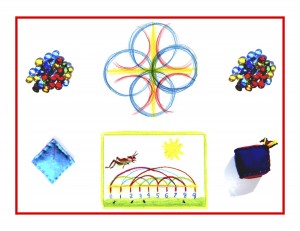Day 99
For one year, 365 days, this blog will address the Common Core Standards from the perspective of creating an alternate, ambient learning environment for math. Ambient is defined as “existing or present on all sides, an all-encompassing atmosphere.” And ambient music is defined as: “Quiet and relaxing with melodies that repeat many times.”
Why ambient? A math teaching style that’s whole and all encompassing, with themes that repeat many times through the years, is most likely to be effective and successful. Today’s post will continue with the Common Core Standards for Grade 1, listed in blue and followed by their ambient counterparts.
Operations and Algebraic Thinking 1.OA
Add and subtract within 20.
5. Relate counting to addition and subtraction (e.g., by counting on 2 to add 2).
In the Waldorf Grade 1, rhythmic counting is used for more than one purpose: to learn to count up to 100 by 1’s and to learn some of the times tables. Counting by 2 happens this way: the children whisper and step lightly on the 1, 3, 5, 7, etc. while stamping and speaking the 2, 4, 6, etc. The odd numbers are later dropped and just the 2’s are spoken and rhythmically stepped. The 2’s can be further enhanced by clapping, skipping, waving a small flag, or playing a tambourine. Rhythm and meter are close friends of math, and they provide the best means to effectively teach and learn it.
Counting to add and subtract is made clearer and more accessible by using manipulatives like the glass gems. This can be done with equations or composing and decomposing numbers, and can also later translate to factoring composite numbers. The 4 processes should always be viewed as comparable and parallel. Just as counting on 2 can be used for multiplication as well as addition, it can also be used for division along with subtraction. The glass gems, then the real numbers, and finally pencil and paper can be used for this.
Knowledge ensues in an environment dedicated to imaginative, creative knowing, where student and teacher alike surrender to the ensuing of that knowledge as a worthy goal. More on the Common Core Grade 1 Operations and Algebraic Thinking Standards along with their ambient counterparts tomorrow!












